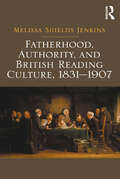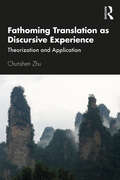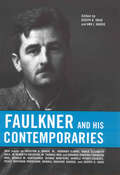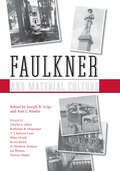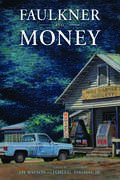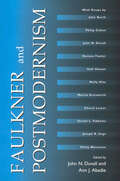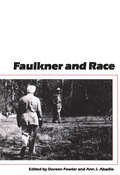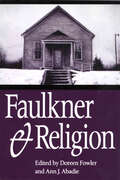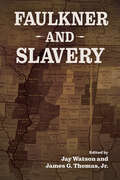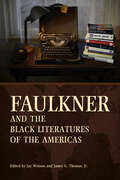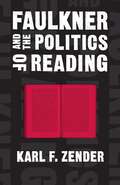- Table View
- List View
Father of the Comic Strip: Rodolphe Töpffer (Great Comics Artists Series)
by David KunzleSixty years before the comics entered the American newspaper press, Rodolphe Töpffer of Geneva (1799–1846), schoolmaster, university professor, polemical journalist, art critic, landscape draftsman, and writer of fiction, travel tales, and social criticism, invented a new art form: the comic strip, or “picture story,” that is now the graphic novel. At first he resisted publishing what he called his “little follies.” When he did, they became instantly popular, plagiarized, and imitated throughout Europe and the United States. Töpffer developed a graphic style suited to his poor eyesight: the doodle, which he systematized and also theorized. The drawings, with their “modernist” spontaneous, flickering, broken lines, forming figures in mad hyperactivity, run above deft, ironic captions and propel narratives of surreal absurdity. The artist's maniacal protagonists mix social satire with myth. By the mid-nineteenth century, Messrs. Jabot, Festus, Cryptogame, and other members of the crazy family, comprising eight picture stories in all, were instant folk heroes. In a biographical framework, Kunzle situates the comic strips in the Genevan and European culture of the time as well as in relation to Töpffer's other work, notably his hilarious travel tales, and recounts their curious genesis (with an initial imprimatur from Goethe, no less) and their controversial success. Kunzle's study, the first in English on the writer-artist, accompanies Rodolphe Töpffer: The Complete Comic Strips, a facsimile edition of the strips themselves, with the first-ever translation of these into English.
Fatherhood, Authority, and British Reading Culture, 1831-1907
by Melissa Shields JenkinsDuring a period when the idea of fatherhood was in flux and individual fathers sought to regain a cohesive collective identity, debates related to a father’s authority were negotiated and resolved through competing documents. Melissa Shields Jenkins analyzes the evolution of patriarchal authority in nineteenth-century culture, drawing from extra-literary and non-narrative source material as well as from novels. Arguing that Victorian novelists reinvent patriarchy by recourse to conduct books, biography, religious manuals, political speeches, and professional writing in the fields of history and science, Jenkins offers interdisciplinary case studies of Elizabeth Gaskell, George Meredith, William Makepeace Thackeray, George Eliot, Samuel Butler, and Thomas Hardy. Jenkins’s book contributes to our understanding of the part played by fathers in the Victorian cultural imagination, and sheds new light on the structures underlying the Victorian novel.
Fathering the Nation: American Genealogies of Slavery and Freedom
by Russ CastronovoRuss Castronovo underscores the inherent contradictions between America's founding principles of freedom and the reality of slavery in a book that probes mid-nineteenth-century representations of the founding fathers. He finds that rather than being coherent and consensual, narratives of nationhood are inconsistent, ambivalent, and ironic. He examines competing expressions of national memory in a wide range of mid-nineteenth-century artifacts: slave autobiography, classic American fiction, monumental architecture, myths of the Revolution, proslavery writing, and landscape painting. Castronovo theorizes a new American cultural studies which takes into consideration what Toni Morrison calls the "Africanist presence" that permeates American literature. He presents a genealogy that recovers those members of the national family whose status challenges the body politic and its history. The forgotten orphans in Melville's Moby-Dick and Israel Potter, the rebellious slaves in the work of Frederick Douglass and William Wells Brown, the citizens afflicted with amnesia in Lincoln's speeches, and the dispossessed sons in slave narratives all provide dissenting voices that provoke insurrectionary plots and counter-memories. Viewed here as a miscegenation of stories, the narrative of "America" resists being told of an intelligible story of uncontested descent. National identity rests not on rituals of consensus but on repressed legacies of parricide and rebellion. This title is part of UC Press's Voices Revived program, which commemorates University of California Press's mission to seek out and cultivate the brightest minds and give them voice, reach, and impact. Drawing on a backlist dating to 1893, Voices Revived makes high-quality, peer-reviewed scholarship accessible once again using print-on-demand technology. This title was originally published in 1995.
Fathers And Sons In The Arab Middle East
by Dalya Cohen-MorDrawing on insights from psychology, sociology, anthropology, religion, history, and literature, this book examines early and contemporary writings of male authors from across the Arab world to explore the traditional and evolving nature of father-son relationships in Arab families.
Fathers and Sons at the Abbey Theatre (1904-1938): A New Perspective on the Study of Irish Drama
by Fabio LuppiFathers and Sons at the Abbey Theatre demonstrates how the literary archetype of the clash between fathers and sons and the subsequent depiction of anti-oedipal figures become a major concern for the playwrights writing in a specific and crucial moment of Irish history (1904-1938). The father can be conceived both as a historical / political metaphor as well as a real father in a specific historical and social context. The classical models employed as theoretical tools to nuance the argument--Laius and Oedipus, Ulysses and Telemachus, Aeneas and Anchises, Priam and Hector, Hector and Astyanax--are challenged by the Christian example of Abraham and Isaac, subversively adjusted by Yeats to provide a tragic reading of post-colonial Ireland. All of these pairings provide archetypes for the understanding of complex personal and familial dynamics.°The book takes into consideration not only the most famous figures of the Irish National Theatre--as W.B. Yeats, J.M. Synge, Augusta Gregory, and Sean O'Casey--but also overlooked authors such as T.C. Murray, Padraic Colum, Paul Vincent Carroll, Lennox Robinson, Denis Johnston, George Shiels, St. John Ervine, Teresa Deevy. Many commentators have written about the playwrights of the Abbey Theatre, mainly focusing on politics, social classes, Irish identity, cultural issues, and linguistic aspects: no thorough analysis of the clash between generations has been published so far. Those who have tackled the issue have devoted their attention to a single author, or to a single aspect; this study aims to demonstrate that the repeated occurrence of anti-oedipal figures and of the archetype of the clash between fathers and sons?a clear manifestation of the need of emancipation from oppressive authorities and of change in Irish society?must be read as a common phenomenon and as a shared concern. The book is written for people interested in Irish studies, post-colonial studies, and theatre studies.
Fathers and Sons in Shakespeare
by Fred B. TromlySome of Shakespeare's most memorable male characters, such as Hamlet, Prince Hal, and Edgar, are defined by their relationships with their fathers. In Fathers and Sons in Shakespeare, Fred B. Tromly demonstrates that these relationships are far more complicated than most critics have assumed. While Shakespearean sons often act as their fathers' steadfast defenders, they simultaneously resist paternal encroachment on their autonomy, tempering vigorous loyalty with subtle hostility.Tromly's introductory chapters draw on both Freudian psychology and Elizabethan family history to frame the issue of filial ambivalence in Shakespeare. The following analytical chapters mine the father-son relationships in plays that span Shakespeare's entire career. The conclusion explores Shakespeare's relationship with his own father and its effect on his fictional depictions of life as a son. Through careful scrutiny of word and deed, the scholarship in Fathers and Sons in Shakespeare reveals the complex attitude Shakespeare's sons harbour towards their fathers.
Fathoming Translation as Discursive Experience: Theorization and Application
by Chunshen ZhuIn his positive approach to translation studies featured in this highly original volume, Chunshen Zhu brings into perspective from the vantage point of translation the workings of human factors in text production, interpretation, and dissemination in and through translation in varying social situations. This book examines a variety of key issues heatedly debated or largely neglected in the field of translation studies and beyond, for example, meaning making, nature of the Unit of Translation, augmentation of transitivity by modification, signification of repetition, and cognitive effects of syntactic iconicity, by critically engaging insights from functional linguistics and philosophy of language, among other fields of study. These issue-driven, phenomenon-focused, and theorization-oriented studies, presented in eight chapters with ample exemplification and case studies, form a coherent whole to bring a network of correlations between theory and practice, linguistics and literature, form and content, information structure and communicative function, intention and effect, and textuality and experience to bear upon the study of translation, fathoming its depths not only as a linguistic operation but more significantly as a textually accountable process of intersubjective and cross-lingual sign making that facilitates humans’ understanding of themselves and of the world. The book is therefore a useful reference for scholars, teachers, and postgraduate and research students who are interested in a comprehensive yet focused approach to translation as an academic subject straddling linguistics and literary, cultural, and social studies, as well as for those who would like to observe bilingualism and cross-cultural communication through translation in general and translation involving the Chinese language in particular.
Faulkner and Film (Faulkner and Yoknapatawpha Series)
by Ann J. Abadie Peter LurieConsidering that he worked a stint as a screenwriter, it will come as little surprise that Faulkner has often been called the most cinematic of novelists. Faulkner's novels were produced in the same high period as the films of classic Hollywood, a reason itself for considering his work alongside this dominant form. Beyond their era, though, Faulkner's novels—or the ways in which they ask readers to see as well as feel his world—have much in common with film. That Faulkner was aware of film and that his novels’ own “thinking” betrays his profound sense of the medium and its effects broadens the contexts in which he can be considered. In a range of approaches, the contributors consider Faulkner’s career as a scenarist and collaborator in Hollywood, the ways his screenplay work and the adaptations of his fiction informed his literary writing, and how Faulkner’s craft anticipates, intersects with, or reflects upon changes in cultural history across the lifespan of cinema. Drawing on film history, critical theory, archival studies of Faulkner's screenplays and scholarship about his work in Hollywood, the nine essays show a keen awareness of literary modernism and its relation to film.
Faulkner and Formalism: Returns of the Text (Faulkner and Yoknapatawpha Series)
by Annette TrefzerFaulkner and Formalism: Returns of the Text collects eleven essays presented at the Thirty-fifth Annual Faulkner and Yoknapatawpha Conference sponsored by the University of Mississippi in Oxford on July 20-24, 2008. Contributors query the status of Faulkner's literary text in contemporary criticism and scholarship. How do scholars today approach Faulkner's texts? For some, including Arthur F. Kinney and James B. Carothers, “returns of the text” is a phrase that raises questions of aesthetics, poetics, and authority. For others, the phrase serves as an invitation to return to Faulkner's language, to writing and the letter itself. Serena Blount, Owen Robinson, James Harding, and Taylor Hagood interpret “returns of the text” in the sense in which Roland Barthes characterizes this shift his seminal essay “From Work to Text.”For Barthes, the text “is not to be thought of as an object . . . but as a methodological field,” a notion quite different from the New Critical understanding of the work as a unified construct with intrinsic aesthetic value. Faulkner's language itself is under close scrutiny in some of the readings that emphasize a deconstructive or a semiological approach to his writing. Historical and cultural contexts continue to play significant roles, however, in many of the essays. The contributions by Thadious Davis, Ted Atkinson, Martyn Bone, and Ethel Young-Minor by no means ignore the cultural contexts, but instead of approaching the literary text as a reflection, a representation of that context, whether historical, economic, political, or social, these readings stress the role of the text as a challenge to the power of external ideological systems. By retaining a bond with new historicist analysis and cultural studies, these essays are illustrative of a kind of analysis that carefully preserves attention to Faulkner's sociopolitical environment. The concluding essay by Theresa Towner issues an invitation to return to Faulkner's less well-known short stories for critical exposure and the pleasure of reading.
Faulkner and His Contemporaries (Faulkner and Yoknapatawpha Series)
by Ann J. Abadie Joseph R. UrgoAlthough he spent the bulk of his life in Oxford, Mississippi-far removed from the intellectual centers of modernism and the writers who created it—William Faulkner (1897–1962) proved to be one of the American novelists who most comprehensively grasped modernism. In his fiction he tested its tenets in the most startling and insightful ways. What, then, did such contemporaries as Ernest Hemingway, Eudora Welty, and Walker Evans think of his work? How did his times affect and accept what he wrote? Faulkner and His Contemporaries explores the relationship between the Nobel laureate, ensconced in his “postage stamp of native soil,” and the world of letters within which he created his masterpieces. In this anthology, essays focus on such topics as how Faulkner's literary antecedents (in particular, Willa Cather and Joseph Conrad) influenced his writing, his literary/aesthetic feud with rival Ernest Hemingway, and the common themes he shares with fellow southerners Welty and Evans. Several essays examine the environment in which Faulkner worked. Deborah Clarke concentrates on the rise of the automobile industry. W. Kenneth Holditch shows how the city of New Orleans acted as a major force in Faulkner's fiction, and Grace Elizabeth Hale examines how the civil rights era of Faulkner's later career compelled him to deal with his ideas about race and rebellion in new ways.
Faulkner and Material Culture: Faulkner And Yoknapatawpha 2004 (Faulkner and Yoknapatawpha Series)
by Ann J. Abadie Joseph R. UrgoPhotographs, lumber, airplanes, hand-hewn coffins—in every William Faulkner novel and short story worldly material abounds. The essays in Faulkner and Material Culture provide a fresh understanding of the things Faulkner brought from the world around him to the one he created. Charles S. Aiken surveys Faulkner's representation of terrain and concludes, contrary to established criticism, that to Faulkner, Yoknapatawpha was not a microcosm of the South but a very particular and quite specifically located place. Jay Watson works with literary theory, philosophy, the history of woodworking and furniture-making, and social and intellectual history to explore how Light in August is tied intimately to the region's logging and woodworking industries. Other essays in the volume include Kevin Railey's on the consumer goods that appear in Flags in the Dust. Miles Orvell discusses the Confederate Soldier monuments installed in small towns throughout the South and how such monuments enter Faulkner's work. Katherine Henninger analyzes Faulkner's fictional representation of photographs and the function of photography within his fiction, particularly in The Sound and the Fury, Light in August, and Absalom, Absalom!.
Faulkner and Money (Faulkner and Yoknapatawpha Series)
by Jay Watson and James G. ThomasContributions by Ted Atkinson, Gloria J. Burgess, David A. Davis, Sarah E. Gardner, Richard Godden, Ryan Heryford, Robert Jackson, Gavin Jones, Mary A. Knighton, Peter Lurie, John T. Matthews, Myka Tucker-Abramson, Michael Wainwright, Jay Watson, and Michael ZeitlinThe matter of money touches a writer's life at every point—in the need to make ends meet; in dealings with agents, editors, publishers, and bookstores; and in the choice of subject matter and the minutiae of imagined worlds. William Faulkner's Yoknapatawpha was no exception. The people and communities he wrote about stayed deeply entangled in personal, national, and even global networks of industry, commerce, and finance, as did the author himself. Faulkner's economic biography often followed, but occasionally bucked, the tumultuous economic trends of the twentieth century. The Faulkner met within these pages is among modern literature's most incisive and encyclopedic critics of what one contemporary theorist calls the madness of economic reason. Faulkner and Money brings together a distinguished group of scholars to explore the economic contexts of Faulkner's life and work, to follow the proverbial money toward new insights into the Nobel Laureate and new questions about his art. Essays in this collection address economies of debt and gift giving in Intruder in the Dust; the legacies of commodity fetishism in Sanctuary and of twentieth-century capitalism's financial turn in The Town; the pegging of self-esteem to financial acumen in the career of The Sound and the Fury's Jason Compson; the representational challenges posed by poverty and failure in Faulkner's Frenchman's Bend tales; the economics of regional readership and the Depression-era literary market; the aesthetic, monetary, and psychological rewards of writing for Hollywood; and the author's role as benefactor to an aspiring African American college student in the 1950s.
Faulkner and Mystery (Faulkner and Yoknapatawpha Series)
by Annette Trefzer & Ann J. AbadieContributions by Hosam Aboul-Ela, Susan V. Donaldson, Richard Godden, Michael Gorra, Lisa Hinrichsen, Donald M. Kartiganer, Sarah Mahurin, Sean McCann, Noel Polk, Esther Sánchez-Pardo, Annette Trefzer, Rachel Watson, and Philip Weinstein Faulkner and Mystery presents a wide spectrum of compelling arguments about the role and function of mystery in William Faulkner's fiction. Twelve new essays approach the question of what can be known and what remains a secret in the narratives of the Nobel laureate. Scholars debate whether or not Faulkner's work attempts to solve mysteries or celebrate the enigmas of life and the elusiveness of truth. Scholars scrutinize Faulkner's use of the contemporary crime and detection genre as well as novels that deepen a plot rather than solve it. Several essays are dedicated to exploring the narrative strategies and ideological functions of Faulkner's take on the detective story, the classic “whodunit.” Among Faulkner's novels most interested in the format of detection is Intruder in the Dust, which assumes a central role in this essay collection. Other contributors explore the thickening mysteries of racial and sexual identity, particularly the enigmatic nature of his female and African American characters. Questions of insight, cognition, and judgment in Faulkner's work are also at the center of essays that explore his storytelling techniques, plot development, and the inscrutability of language itself.
Faulkner and Postmodernism (Faulkner and Yoknapatawpha Series)
by Ann J. Abadie John N. DuvallSince the 1960s, William Faulkner, Mississippi's most famous author, has been recognized as a central figure of international modernism. But might Faulkner's fiction be understood in relation to Thomas Pynchon's Gravity's Rainbow as well as James Joyce's Ulysses? In eleven essays from the 1999 Faulkner and Yoknapatawpha Conference, held at the University of Mississippi, Faulkner and Postmodernism examines William Faulkner and his fiction in light of postmodern literature, culture, and theory. The volume explores the variety of ways Faulkner's art can be used to measure similarities and differences between modernism and postmodernism. Essays in the collection fall into three categories: those that use Faulkner's novels as a way to mark a period distinction between modernism and postmodernism, those that see postmodern tendencies in Faulkner's fiction, and those that read Faulkner through the lens of postmodern theory's contemporary legacy, the field of cultural studies. In order to make their particular arguments, essays in the collection compare Faulkner to more contemporary novelists such as Ralph Ellison, Vladimir Nabokov, Thomas Pynchon, Walker Percy, Richard Ford, Toni Morrison, and Kathy Acker. But not all of the comparisons are to high-culture artists, since even Elvis Presley becomes Faulkner's foil in one of the essays. A variety of theoretical perspectives frame the work in this volume, from Fredric Jameson's pessimistic sense of postmodernism's possibilities to Linda Hutcheon's conviction that cultural critique can continue in postmodernism through innovative new forms such as metafiction. Despite the different theoretical premises and distinct conclusions of the individual authors of these essays, Faulkner and Postmodernism proves once again that in the key debates surrounding twentieth-century fiction, Faulkner is a crucial figure.
Faulkner and Print Culture (Faulkner and Yoknapatawpha Series)
by Jay Watson, Jaime Harker and James G. ThomasWith contributions by Greg Barnhisel, John N. Duvall, Kristin Fujie, Sarah E. Gardner, Jaime Harker, Kristi Rowan Humphreys, Robert Jackson, Mary A. Knighton, Jennifer Nolan, Carl Rollyson, Tim A. Ryan, Jay Satterfield, Erin A. Smith, Jay Watson, and Yung-Hsing WuWilliam Faulkner's first ventures into print culture began far from the world of highbrow New York publishing houses such as Boni & Liveright or Random House and little magazines such as the Double Dealer. With that diverse publishing history in mind, this collection explores Faulkner's multifaceted engagements, as writer and reader, with the US and international print cultures of his era, along with how these cultures have mediated his relationship with various twentieth- and twenty-first-century audiences.These essays address the place of Faulkner and his writings in the creation, design, publishing, marketing, reception, and collecting of books; in the culture of twentieth-century magazines, journals, newspapers, and other periodicals (from pulp to avant-garde); in the history of modern readers and readerships; and in the construction and cultural politics of literary authorship.Several contributors focus on Faulkner's sensational 1931 novel Sanctuary to illustrate the author's multifaceted relationship to the print ecology of his time, tracing the novel's path from the wellsprings of Faulkner's artistic vision to the novel's reception among reviewers, tastemakers, intellectuals, and other readers of the early 1930s. Other essayists discuss Faulkner's early notices, the Saturday Review of Literature, Saturday Evening Post, men's magazines of the 1950s, and Cold War modernism.
Faulkner and Race (Faulkner and Yoknapatawpha Series)
by Doreen FowlerWith contributions by Eric J. Sundquist, Craig Werner, Blyden Jackson, Thadious Davis, Pamela J. Rhodes, Walter Taylor, Noel Polk, James A. Snead, Philip M. Weinstein, Lothar Hönnighausen, Frederick R. Karl, Hoke Perkins, Sergei Chakovsky, Michael Grimwood, and Karl F. ZenderThe essays in this volume address William Faulkner and the issue of race. Faulkner resolutely has probed the deeply repressed psychological dimensions of race, asking in novel after novel the perplexing question: what does blackness signify in a predominantly white society? However, Faulkner's public statements on the subject of race have sometimes seemed less than fully enlightened, and some of his black characters, especially in the early fiction, seem to conform to white stereotypical notions of what black men and women are like. These essays, originally presented by Faulkner scholars, black and white, male and female, at the 1986 Faulkner and Yoknapatawpha Conference, the thirteenth in a series of conferences held on the Oxford campus of the University of Mississippi, explore the relationship between Faulkner and race.
Faulkner and Religion (Faulkner and Yoknapatawpha Series)
by Doreen FowlerThese ten essays from the annual Faulkner and Yoknapatawpha Conference, held in 1989 at the University of Mississippi, explore the religious themes in William Faulkner's fiction. The papers published here conclude that the key to religious meaning in Faulkner may be that his texts focus not so much on God but on a human aspiration of the divine.
Faulkner and Slavery (Faulkner and Yoknapatawpha Series)
by Jay Watson and James G. ThomasContributions by Tim Armstrong, Edward A. Chappell, W. Ralph Eubanks, Amy A. Foley, Michael Gorra, Sherita L. Johnson, Andrew B. Leiter, John T. Matthews, Julie Beth Napolin, Erin Penner, Stephanie Rountree, Julia Stern, Jay Watson, and Randall WilhelmIn 1930, the same year he moved into Rowan Oak, a slave-built former plantation home in his hometown of Oxford, Mississippi, William Faulkner published his first work of fiction that gave serious attention to the experience and perspective of an enslaved individual. For the next two decades, Faulkner repeatedly returned to the theme of slavery and to the figures of enslaved people in his fiction, probing the racial, economic, and political contours of his region, nation, and hemisphere in work such as The Sound and the Fury; Light in August; Absalom, Absalom!; and Go Down, Moses.Faulkner and Slavery is the first collection to address the myriad legacies of African chattel slavery in the writings and personal history of one of the twentieth century’s most incisive authors on US slavery and the long ordeal of race in the Americas. Contributors to the volume examine the constitutive links among slavery, capitalism, and modernity across Faulkner’s oeuvre. They study how the history of slavery at the University of Mississippi informs writings like Absalom, Absalom! and trace how slavery’s topologies of the rectilinear grid or square run up against the more reparative geography of the oval in Faulkner’s narratives. Contributors explore how the legacies of slavery literally sound and resound across centuries of history, and across multiple novels and stories in Faulkner’s fictional county of Yoknapatawpha, and they reveal how the author’s remodeling work on his own residence brought him into an uncomfortable engagement with the spatial and architectural legacies of chattel slavery in north Mississippi. Faulkner and Slavery offers a timely intervention not only in the critical study of the writer’s work but in ongoing national and global conversations about the afterlives of slavery and the necessary work of antiracism.
Faulkner and Whiteness
by Jay WatsonWilliam Faulkner wrote during a tumultuous period in southern racial consciousness, between the years of the enactment of Jim Crow and the beginnings of the civil rights movement in the South. Throughout the writer's career, racial paradigms were in flux, and these shifting notions are reflected in Faulkner's prose. Faulkner's fiction contains frequent questions about the ways in which white Americans view themselves with regard to race along with challenges to the racial codes and standards of the region, and complex portrayals of the interactions between blacks and whites. Throughout his work, Faulkner contests white identity—its performance by whites and those passing for white, its role in shaping the South, and its assumption of normative identity in opposition to non-white “Others.” This is true even in novels without a strong visible African American presence, such as As I Lay Dying, The Hamlet, The Town, and The Mansion. Faulkner and Whiteness explores the ways in which Faulkner's fiction addresses and destabilizes the concept of whiteness in American culture. Collectively, the essays argue that whiteness, as part of the Nobel Laureate's consistent querying of racial dynamics, is a central element. This anthology places Faulkner's oeuvre—and scholarly views of it—in the contexts of its contemporary literature and academic trends exploring race and texts.
Faulkner and the Black Literatures of the Americas (Faulkner and Yoknapatawpha Series)
by Jay Watson And James G. Thomas Jr.Contributions by Ted Atkinson, Thadious M. Davis, Matthew Dischinger, Dotty Dye, Chiyuma Elliott, Doreen Fowler, Joseph Fruscione, T. Austin Graham, Rachel Eliza Griffiths, Derrick Harriell, Lisa Hinrichsen, Randall Horton, George Hutchinson, Andrew B. Leiter, John Wharton Lowe, Jamaal May, Ben Robbins, Tim A. Ryan, Sharon Eve Sarthou, Jenna Sciuto, James Smethurst, and Jay WatsonAt the turn of the millennium, the Martinican novelist Édouard Glissant offered the bold prediction that “Faulkner’s oeuvre will be made complete when it is revisited and made vital by African Americans,” a goal that “will be achieved by a radically ‘other’ reading.” In the spirit of Glissant’s prediction, this collection places William Faulkner’s literary oeuvre in dialogue with a hemispheric canon of black writing from the United States and the Caribbean. The volume’s seventeen essays and poetry selections chart lines of engagement, dialogue, and reciprocal resonance between Faulkner and his black precursors, contemporaries, and successors in the Americas.Contributors place Faulkner’s work in illuminating conversation with writings by Paul Laurence Dunbar, W. E. B. Du Bois, James Weldon Johnson, Jean Toomer, Nella Larsen, Claude McKay, Ralph Ellison, James Baldwin, Ernest J. Gaines, Marie Vieux-Chauvet, Toni Morrison, Edwidge Danticat, Randall Kenan, Edward P. Jones, and Natasha Trethewey, along with the musical artistry of Mississippi bluesman Charley Patton.In addition, five contemporary African American poets offer their own creative responses to Faulkner’s writings, characters, verbal art, and historical example. In these ways, the volume develops a comparative approach to the Faulkner oeuvre that goes beyond the compelling but limiting question of influence—who read whom, whose works draw from whose—to explore the confluences between Faulkner and black writing in the hemisphere.
Faulkner and the Discourses of Culture (Southern Literary Studies)
by Charles HannonThroughout his career, William Faulkner produced a literary discourse remarkably contiguous with other discourses of American culture, but seldom has his work been explored as a participant in the shifts and ruptures that characterize modern discursive systems. Charles Hannon argues in his brilliant new study that the language of Faulkner's fiction is replete with the voiced conflicts that shaped America and the South from the 1920s to1950. Specifically, Hannon takes five contemporary debates -- in historiography, law, labor, ethnography, and film -- and relates them both to canonical and less-discussed texts of Faulkner.Hannon employs a theoretical middle ground between Michael Bakhtin's stylistics of the novel and Michel Foucault's model of discourse as an autonomous self-regulated domain, while also drawing from the vast critical literature on Faulkner's fiction. He begins by linking the story cycle The Unvanquished to the battle over interpretations of American history as voiced by the Nashville Agrarians on the one hand and W. E. B. DuBois on the other. Next Hannon shows how Faulkner's detective fiction of the early 1930s and portions of his novel The Hamlet were affected by the emerging schism between adherents of a new school of legal realism and those bound to a more conservative formalist jurisprudence. According to Hannon, Faulkner's great novel Absalom, Absalom! reflects in its depiction of various forms of labor one of Franklin Roosevelt's major New Deal accomplishments -- the Wagner Act of 1935 -- as well as contract disputes in the agricultural and manufacturing South and in the film studios of Hollywood. Hannon discusses Faulkner's experimentation in The Hamlet vis-á-vis the development of the ethnographic method in the field of anthropology. He concludes with a fascinating analysis of the filming of Intruder in the Dust in Faulkner's hometown of Oxford, Mississippi.Through Hannon's keen interpretive readings, Faulkner's texts emerge as a complex "node" in the larger discursive conflicts of his time. Though he often seemed to be detached from influence, Faulkner was, Hannon reveals, intensely attentive to ideas at the fore.
Faulkner and the Ecology of the South (Faulkner and Yoknapatawpha Series)
by Joseph R. UrgoIn 1952, Faulkner noted the exceptional nature of the South when he characterized it as “the only really authentic region in the United States, because a deep indestructible bond still exists between man and his environment.” The essays collected in Faulkner and the Ecology of the South explore Faulkner's environmental imagination, seeking what Ann Fisher-Wirth calls the : “ecological counter-melody” of his texts. “Ecology” was not a term in common use outside the sciences in Faulkner's time. However, the word “environment” seems to have held deep meaning for Faulkner. Often he repeated his abiding interest in “man in conflict with himself, with his fellow man, or with his time and place, his environment.” Eco-criticism has led to a renewed interest among literary scholars for what in this volume Cecelia Tichi calls, “humanness within congeries of habitats and environments.” Philip Weinstein draws on Pierre Bourdieu's notion of habitus. Eric Anderson argues that Faulkner's fiction has much to do with ecology in the sense that his work often examines the ways in which human communities interact with the natural world, and François Pitavy sees Faulkner's wilderness as unnatural in the ways it represents reflections of man's longings and frustrations. Throughout these essays, scholars illuminate in fresh ways the precarious ecosystem of Yoknapatawpha County.
Faulkner and the Native Keystone
by Biljana OklopcicThe last fifty years have witnessed a never-ending flow of criticism of William Faulkner and his fiction. While this book touches on the prevailing critical theory, it concentrates on a number of fresh observations on themes and motifs that place William Faulkner's fiction in general, regional, global and universal contexts of American and Western literature. Paying special attention to themes and motifs of racism, sexism, women's education, myths and stereotypes - to mention just a few -- the book analyzes Faulkner's ability to write and to be read within and beyond his "native keystone" - his South. Coming from a non US-Americanist perspective, this contribution to the scholarly literature on William Faulkner discusses his best-known novels, contends that regionalism, internationalism and universalism are the context of his fiction and argues for feminist, post-colonial, and psychoanalytical approaches to it. The book is intended for scholars in the field of American literature, American Studies and Southern Studies as it covers the South's complex history, its peculiar cultural institutions and the daunting body of international critical studies that has flourished around the novels during the last five decades. Graduate students will also find this book useful as it analyzes and interprets the novels and short stories of one of the greatest American novelists of the 20th century in an easily understandable way, offering new and fresh readings on (1) race and gender stereotypes present in American and European culture and literature, (2) conventions of family/genealogical fiction/drama and (3) universal life situations and feelings.
Faulkner and the Native South (Faulkner and Yoknapatawpha Series)
by Jay Watson, Annette Trefzer and James G. ThomasContributions by Eric Gary Anderson, Melanie R. Anderson, Jodi A. Byrd, Gina Caison, Robbie Ethridge, Patricia Galloway, LeAnne Howe, John Wharton Lowe, Katherine M. B. Osburn, Melanie Benson Taylor, Annette Trefzer, and Jay Watson From new insights into the Chickasaw sources and far-reaching implications of Faulkner’s fictional place-name “Yoknapatawpha,” to discussions that reveal the potential for indigenous land-, family-, and story-based methodologies to deepen understanding of Faulkner’s fiction (including but not limited to the novels and stories he devoted explicitly to Native American topics), the eleven essays of this volume advance the critical analysis of Faulkner’s Native South and the Native South’s Faulkner. Critics push beyond assessments of the historical accuracy of his Native representations and the colonial hybridity of his Indian characters. Essayists turn instead to indigenous intellectual culture for new models, problems, and questions to bring to Faulkner studies. Along the way, readers are treated to illuminating comparisons between Faulkner’s writings and the work of a number of Native American authors, filmmakers, tribal leaders, and historical figures. Faulkner and the Native South brings together Native and non-Native scholars in a stimulating and often surprising critical dialogue about the indigenous wellsprings of Faulkner’s creative energies and about Faulkner’s own complicated presence in Native American literary history.
Faulkner and the Politics of Reading (Southern Literary Studies)
by Karl F. ZenderWith this study Karl F. Zender offers fresh readings of individual novels, themes, and motifs while also assessing the impact of recent politicized interpretations on our understanding of Faulkner’s achievement. Sympathetically acknowledging the need to decenter the canon, Zender’s searching interrogation of current theory clears a breathing space for Faulkner and his readers between the fustier remnants of New Criticism and the excesses of post-structuralism.Each chapter opens with a balanced presentation of the genuine gifts contemporary theory has bestowed on our comprehension of a particular novel or problem in Faulkner criticism and then proceeds with a groundbreaking reading. “The Politics of Incest” challenges older psychoanalytic interpretations of Faulkner’s use of the incest motif, and “Faulkner’s Privacy” defends the novelist’s difficulty or “reticence” as an aesthetic resistance against the rude candor of deregionalized and depersonalized culture. Subsequent chapters take up the volatile issues of Faulkner’s representations of women and of African Americans, and a close reading of the classic “Barn Burning” critiques the current tendency to blur the concepts of patriarchy and paternity. The elegiac final chapter, “Where is Yoknapatawpha County?” draws on a comparison with John Updike’s Pennsylvania fiction and a reading of Joan Williams’s The Wintering to explore Faulkner’s disinclination to represent the quotidian realities of southern life in his later novels. Zender shows that Faulkner’s stylistic withdrawal attempts to “transform into beauty” his alienation from the postwar world and his fear of aging. That Faulkner and the Politics of Reading itself recovers and gives new luster to Faulkner’s beauty will surely please, in the author’s words, “those readers . . . for whom literature is less a mechanism of social change than a source of pleasure.” The originality of its critical vision will inspire Faulkner scholars, students of American literature, and general readers.

